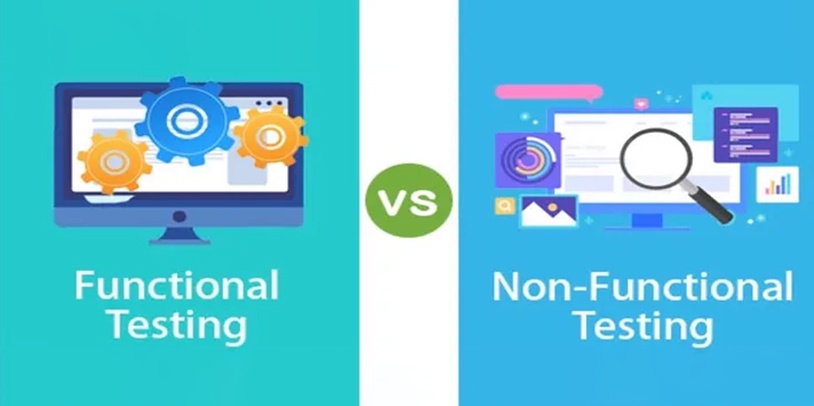What is Functional Testing and Non-Functional Testing?
In software development, testing plays an important role in ensuring the quality and reliability of applications. The two main types of testing methods are functional testing and non-functional testing. Let’s take a look at what each testing method does and how it helps software development.
What is Functional Testing?

This testing process is primarily concerned with what the software system does. It focuses on ensuring that every function of a software application works as needed and as we want our software should work. It performs tests to ensure they are performing as we expected.
There are 4 Main Types of Functional Testing
- Unit testing: This is a testing process where each individual component or software module is tested to eliminate available bugs in the application.
- Integration Testing: This type of testing is a scenario in which every module of the software is tested to detect bugs and whether their system works properly or not.
- System Testing: This testing process tests the overall system behavior and functionality to ensure that the software meets specified requirements that are critical to us and the user.
- Acceptance testing: It Determines whether or not the software meets the accepted performance criteria and meets our expectations.
Functional testing is just like black box testing. Where we test the functionality of the software even though we do not know the code structure of the software.
What is Non-Functional Testing?

Non-functional testing is the process of testing so we can know how well the software will work. It examines the key system features such as performance, usability, reliability, and security.
These are The 4 Main Types of Non-Functional Testing
- Performance testing: We use this testing method to measure the response time of the software. Also, it is used to test scalability and stability in various environments to ensure that software applications will perform properly in any environment
- Usability Testing: We perform this testing process to test the software and to verify that the functionality of the application interface is user-friendly.
- Reliability testing: This testing protocol is used to test the ability and reliability of the software system. It is used to confirm the software is operating consistently over time.
- Security testing: This testing process is necessary for us to ensure that the system of software is secure from unauthorized access or malicious and virus attacks.
Non-functional testing is just as important for us as functional testing. Because it addresses factors that are critical to user satisfaction and overall system performance
These are The Main Difference Between Functional Testing and Non-Functional Testing
- Focus of testing: Functional testing is used for the testing of what the system does, while Non-Functional Testing checks how well the software system will work.
- Scope of testing: Functional testing primarily targets application features and functionality while non-functional testing focuses on quality attributes such as usability, functionality, and security
- Testing Methods: Functional testing usually uses the black box testing but Non-Functional Testing can include both black box and white box methods depending on the type of software application being tested.
- Both types of testing are important: Both Testing is an important component of us for a good software testing program. Functional testing ensures that the software meets the user’s requirements and works properly and Non-Functional Testing assures that it works properly under various conditions.
Conclusion
Functional testing and non-functional testing are important components for testers and developers for performance testing in software testing and development. When functional testing verifies whether or not the performance of the system meets the specified requirements. Non-functional testing tests its quality to ensure functionality, usability, reliability, and safety. For Delivering high-quality software we require high-quality testing methods that incorporate both types of testing. It is important to deliver high-quality software that meets user expectations and industry standards


No comments yet